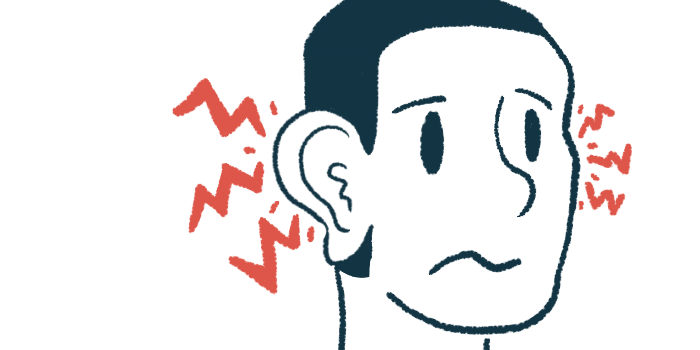Impairments in sound processing linked to speech problems in Rett
Girls had deficiencies compared to healthy children on 2 parameters: Study

Sound processing — part of a complex system in the brain — is impaired in girls with Rett syndrome, and those impairments correlate with deficiencies in the children’s speech skills, a new study found.
In their work with more than 40 children with Rett, a team of researchers in Russia used two noninvasive parameters — auditory steady-state response, called ASSR, and sustained wave, or SW — that assess distinct brain electrical changes in response to sound. While ASSR assesses hearing thresholds following a stimulus, SW is associated with processing of the auditory signal.
The team found that ASSR impairments are tied to developing speech abnormalities in Rett children.
“These processes are important for speech comprehension and when impaired might affect speech development,” the scientists wrote.
Altogether, the team said, “we assume that these impairments may play a role in abnormal speech development in children with [Rett].”
The study, “Atypical brain responses to 40-Hz click trains in girls with Rett syndrome: Auditory steady-state response and sustained wave,” was published in the journal Psychiatry and Clinical Neurosciences.
Investigating 2 processes — ASSR and SW — specifically in Rett
Rett syndrome is chiefly caused by mutations in the MECP2 gene, which codes for MeCP2 — a protein that regulates the activity of other genes that play a critical role in brain function and development. Symptoms of Rett include difficulties in learning, speech, mood, movement, and breathing.
Past studies suggest that the processing of sound is affected in Rett, and that this may contribute to difficulties in speech perception, hampering the ability of girls with the condition to acquire new vocabulary.
Now, a team led by a scientist from the Russian Academy of Science, in Moscow, evaluated the ability of Rett patients to process sound stimuli triggered by 40 Hertz auditory stimulation.
“The aim of this study is to investigate two neurophysiological responses to rhythmic stimulation — ASSR and SW — in children with [Rett]. We hypothesize that they are impaired and connected with the level of speech development, age, and/or disease progression,” the investigators wrote.
Studying both of these mechanisms [ASSR and SW] will allow us to shed light on broader aspects of auditory mechanisms in [Rett].
Though previous research had reported that ASSR and SW are attenuated overall in people with neurodevelopmental disorders, which would include Rett, neither parameter had been investigated specifically in children with this rare condition.
“Studying both of these mechanisms will allow us to shed light on broader aspects of auditory mechanisms in [Rett],” the team wrote.
The team used an electroencephalogram, commonly called an EEG, to record the electrical activity of the brain in girls with Rett versus children with a typical normal development, who served as controls.
A total of 43 girls with Rett, with a mean age of 8.19 years, and 43 age-matched children — including 26 girls — were involved in the study. The Rett patients all had MECP2 gene mutations.
During the study, children were sitting in a comfortable chair and watching a muted video while sound stimuli were delivered to both ears using headphones.
The severity of Rett symptoms was assessed using a modified version of the Rett Syndrome Severity Scale, which assesses motor function, seizures, respiratory irregularities, spine curvature, speech, and sleep quality. On this scale, higher scores indicate more severe symptoms. Also, clinicians with experience in Rett described the speech development of each patient.
Among the 43 participants with Rett, 21 had no speech, 15 were able to pronounce sound patterns or syllables, and seven were able to pronounce words; the average number varied between three and 10.
Sound processing found to be decreased in Rett vs. healthy children
The analyses revealed that both ASSR and the SW were decreased in children with Rett compared with controls.
SW differences between Rett children and controls were seen since early childhood, and decreased as the children got older, according to the team.
“Even very young children with [Rett] have diminished SW compared with their peers,” the researchers wrote. SW amplitude increases with increasing stimulation frequency.
“Girls with [Rett] have problems in coding … which hampers their speech perception,” the team noted.
In the case of ASSR, the differences were negligible in early childhood. However, with time, ASSR increased in the typically developing group, but not in those with Rett.
The researchers then assessed SW and ASSR when children were divided according to their level of speech development — “no speech,” “sound patterns or syllables,” or “words.”
The results revealed significant differences for ASSR between the groups, but not for SW. Specifically, ASSR correlated with speech skills in that the highest values were found in the words group, followed by the sound patterns or syllables group.
Overall, “ASSR and SW show promise as noninvasive electrophysiological biomarkers of auditory processing that have clinical relevance and can shed light onto the link between genetic impairment and the RTT [clinical presentation],” the scientists concluded.
The team noted there could potentially be concern regarding the inclusion of boys in the control group.
“However, based on previous literature and our additional analysis, we believe it did not affect our results and allowed our [control] group to be more representative of the general population,” the researchers noted.








